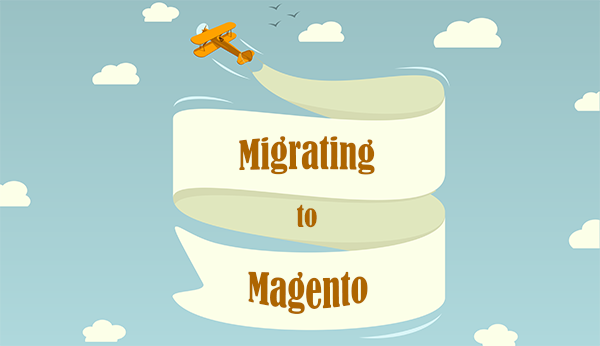
By Brad Leslie, Certified Magento Developer at InteractOne
What to consider when Migrating?
With roughly 200,000 eCommerce shops using its platform, Magento has established itself as one of the most popular and most powerful ecommerce solutions in the industry. Due to this fact, shop owners are investigating Magento now more than ever before. One of the most important questions (and the one with the most complicated answer) is ‘how will my shop migrate from the legacy system to Magento?’.
As is true with any website migration, there are a few major factors that must be evaluated before the migration can be considered viable:
- Functionality
- Performance
- Legacy Data
Magento is a complete eCommerce solution out of the box, meaning that all product, customer and order functionality is included by default — as well as a number of other pieces of functionality that are useful within an eCommerce shop. Magento currently offers Community Edition (CE) for free and Enterprise Edition (EE) for a yearly license fee. The feature list includes a breakdown of all CE and EE features, which makes it easy to see which pieces of functionality are included in each version.
If non-default functionality is required within Magento, shop owners have two options: install an extension or develop a custom module with the desired functionality. See our articles on ‘third party extensions vs custom development’ and ‘finding a Magento developer’ for more information.
Performance has always been a concern for Magento shops and has been a major pain point when migrating from legacy shops to Magento. PHP7 offers a tremendous improvement to Magento’s performance with minimal effort, as detailed by our blog post Improve Magento Performance By Upgrading to PHP7. While Magento 1 requires an extension to support PHP7, Magento 2 supports PHP7 out of the box.
Depending on how long the legacy shop has been active, there could be a lot of important data within the legacy database. While it’s typically a good idea to migrate legacy product, customer and order data, the shop owner must decide which data needs to be migrated. Inactive customers and orders that are several years old are sometimes ignored, but allowing the customer to review their legacy orders and re-order products are known to improve the customer user experience and lower customer service inquiries post-migration.
Once migrating to Magento has been determined to be viable, it’s helpful to turn the focus to the future. There are some important things to keep in mind:
- Upgrades: Magento regularly publishes new releases of EE and CE, which contain bug fixes, new features, security updates, etc. Keeping Magento up to date with the latest version is a best practice and ensures that the shop is as secure as possible.
- Security: Anytime a new security vulnerability is exploited, Magento issues a security patch and new version of Magento, which includes the patch files. It’s important to understand how the vulnerabilities affect the shop and how the patch should be applied so that customer data cannot be compromised.
- New Technologies: While not necessarily a Magento-specific concept, it’s always a good idea to stay current with the latest technologies. In addition to the programming languages Magento is built with, SSL certificates and other security measures are regularly improved and released. Magento often partners with service providers who can help improve the quality of the code base, as well, such as New Relic and Blackfire.io.
Although migrating to a new eCommerce platform can seem like a daunting task, formulating a solid plan and understanding all aspects of the migration will make the process as efficient as possible. Magento has done a great job of improving documentation and community resources over the past few years in an attempt to make the Magento experience as straightforward as possible.
Here at InteractOne we understand that choosing a Magento migration from other eCommerce platforms, or even upgrading to the latest version of Magento, can feel daunting. Having launched many Magento sites, we know the common elements of what creates the most successful Magento migrations. Let InteractOne float you through it.